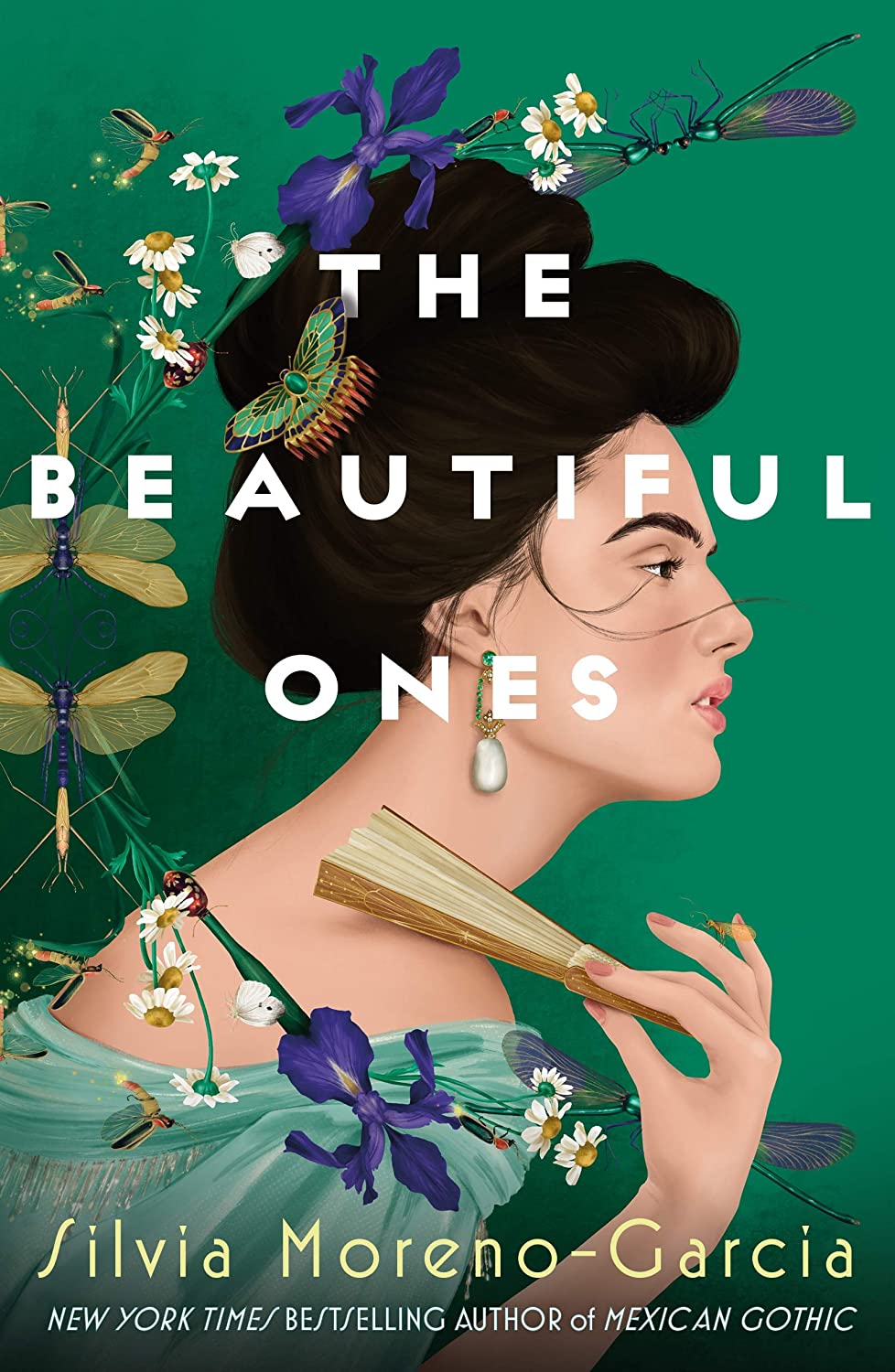The way he spoke made Hector realise that while Gaétan was a pompous, pretentious fool, he did care about his family. Well, he cared about Nina. Could the same be said about his feelings for Valerie? They were distant during dinner. There was no animosity between them, but he could feel no bond joining them. He wondered if he could expect the same if he married Nina, this clear separation, this gap to lie between them. Did it matter?
The Beautiful Ones by Silvia Moreno-Garcia | Fantasy/Historical Fiction/Romance | Tor Books | 292pages | Review by Niki Igbaroola
Gothic meets the romantic in Silvia Moreno-Garcia’s delicious re-released novel, The Beautiful Ones. Readers are whisked to Loisail, the world of The Beautiful Ones for whom polite society is both home and badge of honour. The story follows the love triangle between Hector, Valerie, and Nina, Valerie’s niece, as Nina makes her debut during the Grand Season, the courting season in Loisail. Moreno-Garcia takes us back into a world where courting occurred in ballrooms but adds a touch of the mystical in the form of telekinesis, a power both Hector and Nina possess. However, throughout the novel, Moreno-Garcia explores whether this shared power is enough to build a solid foundation for love.
Past Passion and Present Preoccupations
The first half of The Beautiful Ones introduces readers to the complex and intricate world of Loisail. We are also introduced to a dark love triangle in which Hector courts a naïve Nina while secretly infatuated with her aunt, Valerie. We learn about the history between Hector and Valerie, which makes Hector’s acquaintance with Nina both salacious and sad.
Moreno-Garcia takes us back into a world where courting occurred in ballrooms but adds a touch of the mystical in the form of telekinesis.
As the readers meet the three main characters, they are also introduced to their flaws, forcing us to question how we want the story to be resolved. For example, while Valerie’s envy of Hector’s courting of Nina makes her unlikeable, it is balanced by her arranged marriage to Nina’s cousin, Gaétan, which allows the reader to feel sympathy they might not otherwise feel for Valerie.
The Bug-Filled Nature of Life and Love
Much of the novel’s narrative journey to love is tied to nature. Nina is uncharacteristically fascinated by nature and anatomy – pursuits that are not becoming for a young woman hoping to make a good society match. These pursuits, plus her country origins, make navigating the pretentious and classist world of Loisail difficult; falling in love with her aunt’s former suitor makes her first season even more tenuous.
Valerie is a character through which Moreno-Garcia explores the power imbalance women have traditionally faced in marriages, which is unexpected and ironic in a romance novel.
While Nina is unaware of the folly of her attraction, her lack of artifice allows for her flirtations to be true to herself, introducing her suitors to her powers and hobbies in attempts to win their affections. We are reminded that romance is layered, beautiful, and personal when we see Nina wooed through rare beetles rather than the expected jewelry. Moreno-Garcia’s writing of Nina is wonderful because there are moments in which the reader wants to slip into the novel and shake Nina awake to the realities of life; not in an attempt to strip her of her identity, but in an effort to get her to better protect what’s dear.
Valerie is a wonderful villain. Growing slowly and surely into her worst self across the narrative, she combusts. Her mask of beauty that obscures her true self to many, particularly men, finally slips. The revelation of Valerie in her true form is so theatrically grotesque; it borders on the comic. However, the darkness of her desires allows for her final form to be both ugly and sad.
There is much questioning of the merit of marriage within this novel, and still, we are rooting for love to triumph.
Valerie is a character through which Moreno-Garcia explores the power imbalance women have traditionally faced in marriages, which is unexpected and ironic in a romance novel. Valerie’s marriage, arranged to save her family from ruin, has left her bitter and dissatisfied due to the lack of choice she believes has formed her life. The character of Luc, however, who is also participating in the Grand Season, allows us to see that the idea of marriage and choice can be limited for men as well. As a younger son, Luc finds himself needing to marry into money in order to continue to fund the lifestyle expected of someone of his class, despite having limited familial financial support.
There is much questioning of the merit of marriage within this novel, and still, we are rooting for love to triumph.
The Beautiful Ones is a perfect fantasy-historical-romance novel. Moreno-Garcia’s novel is just what is needed for a reader looking to escape into a world of fantasy, decadence, and romance.

REWRITE MEMBERSHIP
paypal.Buttons({
style: {
shape: ‘rect’,
color: ‘gold’,
…

